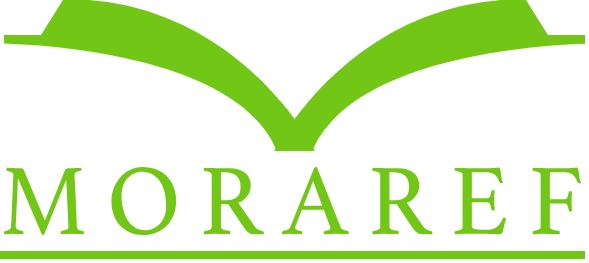Kebertahanan Mbaru Gendang (Rumah Adat) Pada Masyarakat Manggarai di Desa Ketang Kecamatan Lelak, Kabupaten Manggarai, Flores Nusa Tenggara Timur
Abstract
For the Manggarai people in Ketang Village, Mbaru Gendang have a crucial role and strategic function for the continued existence of their culture. This house has deep significance and meaning for the soul and life of the Manggarai people and culture. Mbaru Gendang provides physical, psychological and spiritual comfort for its residents. In the midst of the increasingly rapid development of globalization, culture has also changed with the times. However, until now the people of Ketang Village still maintain their customs, namely mbaru gendang. This research aims to explain the factors of survival of the mbaru gendang in and explore the symbolic meaning of the mbaru gendang in the Ketang Village community. This research uses the theory of Semiotics Theory: Roland Barthez. The concepts used as guidelines in this research are survival, traditional houses, mbaru gendang, and symbolic meaning. This research uses qualitative research methods through observation, interviews and literature study techniques. The researcher is the main research instrument, assisted by interview guides, voice recorders, cameras and writing tools. The results of the research show that the survival factor of mbaru gendang is the function factor of mbaru gendang, namely, mbaru gendang as a place to live, or for family gatherings, mbaru gendang bate mbaru (as a shelter), mbaru gendang as a place to receive guests, mbaru gendang as a place for lonto leok (meetings). (customary assembly), mbaru gendang as a place where the spirits of ancestors reside, mbaru gendang bate kuni agu if (as an identity) for the Manggarai people in Ketang Village. Mbaru gendang basically contains many symbols that describe the identity of the Manggarai people and culture of the Ketang Village community. Its round shape is a symbol of a mindset and lifestyle that prioritizes unity and togetherness.
Keywords
Full Text:
PDFReferences
Barhez, Roland (2007). Membedah Mitos-Mitos Budaya Massa: Semiotika Semiologi Tanda, Simbol dan Representasi. Yogyakarta: Jalasutra.
Bathez, Roland (1970). S/Z AN ESSAY: Translated by Ricard Miller Preface by Ricard Howard.
Dagur, Bagul Antony. 1997. Kebudayaan Manggarai sebagai Satu Khasanah Kebudayaan Nasional, Surabaya: Ubhara Press.
Darus, Antonius, 2009. “Filsafat Nusantara”. Bahan Ajar. Kupang: FFA Universitas Katolik Widya Mandira.
Soekanto, Soerjono. 2013. Sosiologi Suatu Pengatar. Jakarta: Rajawali Pers. Maryaeni. 2005. Metode Penelitian Kebudayaan. Jakarta: Bumi Aksara.
Gunawan, Imam. 2014. Metode Penelitian Kualitatif: Teori dan Praktik . Jakarta Bumi Aksara.
Panjaitan, Ade Putra, dkk. 2014. Korelasi Kebudayaan Dan Pendidikan (Membangun Pendidikan Berbasis Budaya Lokal), Jakarta: Yayasan Pustaka Obor Indonesia.
Poerwadarminta, W.J.S. (1976). Kamus Umum Bahasa Indonesia. Jakarta: Balai Pustaka.
Raga Maran, Rafael. 2007. Manusia Dan Kebudayaan Dalam Perspektif Ilmu Budaya Dasar. Jakarta: Rineka Cipta
Ratna, Nyoman Kutha. 2010. Metodologi Penelitian: Kajian Budaya Dan Ilmu-Ilmu Social Humaniora Pada Umumny. Yogyakarta: Pustaka Belajar
Creswell, John W. 2015. Research Design: Pendekatan Kualitatif, Kuantitatif, dan Mixed. Yogyakarta: Pustaka Pelajar.
Moleong, Lexy J. 2011. Metodologi Penelitian Kualitatif Edisi revisi. Bandung: PT. Remaja Rosdakarya.
Hadi, Sutrisno.1991. Metodelogi Research. Yogyakarta: Andi Offset.
Suhartono, Suparlan. 2008. Wawasan Pendidikan: Sebuah Pengantar Pendidikan.
Yogyakarta: AR-Ruzzmedia.
Sugiyono. 2013. Memahami Penelitian Kuantitatif, Kualitatif dan R&D. Bandung: Alfabeta CV.
Yohanes, Fransiska Widyawati, 2020. Mbaru Gendang, Rumah Adat, Manggarai Flores, Eksistensi, Sejarah dan Transformasinya.
Louis, M. (2015). Fungsi Dan Makna Ruang Pada Rumah Adat Mbaru Niang Wae Rebo. Intra, 3(2), 580–585.
Departemen Pendidikan dan Kebudayaan (DepDikBud).1982. Album Seni Budaya Nusa tenggara Timur. Jakarta: Direktorat Jenderal Kebudayaan.
Soeriadiredja, Purwadi. 2002. “Prinsip-prinsip struktural Dalam Rumah Tradisional Sumba Di Umalulu”. Tesis Program Studi Antropologi Jurusan ilmu-ilmu Humaniora (S2) Universitas Gajah Mada, Yogyakarta.
Soeriadiredja, Purwadi dkk. 2013. “Database Masyarakat Hukum Adat Ekoregion Bali Dan Nusa Tenggara”. Jakarta: Kementrian Lingkungan Hidup Republik Indonesia.
Adon, M. J. (2022). Menggali Konsep Filosofis Mbaru Gendang Sebagai Simbol Identitas Dan Pusat Kebudayaan Masyarakat Manggarai, Flores, Nusa Tenggara Timur. Masyarakat Dan Budaya, 24, No. 2(2), 231–251. https://doi.org/10.55981/jmb.1616
Boy Lon, Servatius Yohanes. 2009. “God is Mori Kraeng and Ine Rinding Wie in Manggarai” dalam Jurnal Pendidikan dan Kebudayaan MISSIO, Ruteng, Januari 2009, Volume 1, No 1, hlm. 1-6.
Mathias, (2020). Menggali Konsep Filosofis Mbaru Gendang Sebagai Simbol Identitas Dan Pusat Kebudayaan Masyarakat Manggarai, Flores, Nusa Tenggara Timur ”.
Jalaludin, Rakhmat. (1994). Psikologi Komunikasi. Bandung: Remaja Rosdakarya. Muanas, Dasum. 1984. Arsitektur Tradisioanal Daerah Jawa Barat. Bandung. Dep.P&K
PIDKD Jabar.
Seran, dk. 2005. Arsitektur Rumah Tradisional Todo Desa Todo, Kecamatan Satar Mese, Kabupaten Manggarai. Laporan Hasil Penelitian, NTT.
Arikunto, S. (2019). Prosedur Penelitian Suatu Pendekatan Praktis. Rinneka Cipta. Sugiyono, S. (2015). Metode Penelitian Kuantitatif, Kualitatif, Dan R&D. Alfabeta.
Uju, G. F., Bhuja, P., & Boro, T. L. (2019). Kajian Kearifan Lokal Masyarakat Dalam Pengelolaan Hutan Lindung di Kampung Wae Rebo, Desa Satar Lenda, Kabupaten Manggarai. Jurnal Biotropikal Sains, 16(1), 1–11.
Dahrul, Suhardi (2019). Makna Simbolik Konstruksi Rumah Adat(Mbaru Gendang)Desa Mbui’t Kecamatan Boleng Kabupaten Manggarai Barat. Universitas Muhammadiyah Mataram.
DOI: https://doi.org/10.5281/zenodo.13624211
Refbacks
- There are currently no refbacks.
Copyright (c) 2024 Selviana Sanul, I Gst. Ngr. A. Krisna Aditya, Ni Made Anggita Sastri Mahadewi

This work is licensed under a Creative Commons Attribution-ShareAlike 4.0 International License.
ISSN : 3025-6704

.png)





